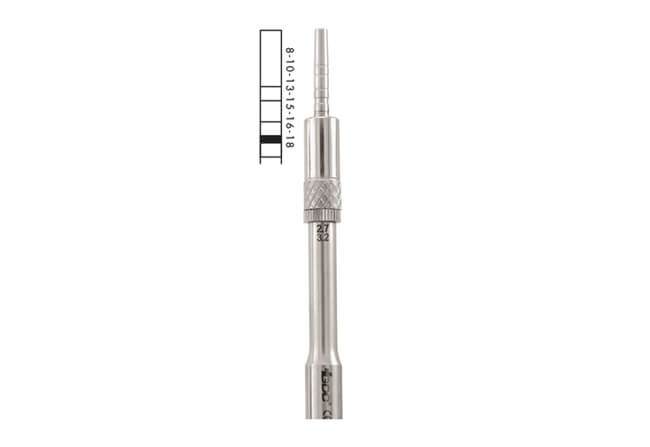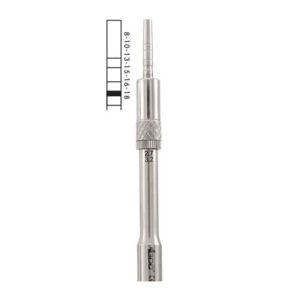Need help? Call us:
+91-9310354377
- ACCESSORIES
- NEW ARRIVAL
- LUXATIP
- ORTHODONTICS
- IMPLANTOLOGY
- ORAL AND MAXILLOFACIAL SURGERY
- ENDODONTIC AND CONSERVATIVE DENTISTRY
- CARVER
- COMPOSITE INSTRUMENTS TITANIUM BLUE
- MATRIX RETAINER
- COMPOSITE INSTRUMENTS TITANIUM GOLD
- CHISELS & HOE
- PLACEMENT INSTRUMENTS
- MARGIN TRIMMER
- COMPOSITE INSTRUMENTS SILICON BLACK/BLUE
- AMALGAM CARRIER
- RUBBER DAM FORCEP AND PUNCH
- COMPOSITE INSTRUMENTS ANTERIOR & POSTERIOR BLACK
- RUBBER DAM CLAMP
- COMPOSITE INSTRUMENTS ANTERIOR & POSTERIOR BLUE
- RUBBER DAM FRAME
- SPOON EXCAVATOR
- COMPOSITE INSTRUMENTS GOLD FLEXI THIN
- ENDO INSTRUMENT KITS
- PLUGGER/CONDENSERS
- RCT PLUGGER
- ART INSTRUMENTS
- PLASTIC FILLING INSTRUMENTS
- RCT SPREADERS & HEAT CARRIERS
- BURNISHER
- ROOT FRAGMENT STEIGLITZ
- DIAGNOSTICS
- PROSTHODONTIC
- PKT CARVERS COLOR CODED
- IMPRESSION TRAY HALF
- WAX KNIVES & SPATULA
- CROWN REMOVER
- ARTICULATING PAPER HOLDER & CROWN HOLDING FORCEP
- ANTERIOR AND POSTERIOR & ADJUSTABLE
- GINGIVAL CORD PACKER
- PROSTHODONTIC INSTRUMENT KITS
- CEMENT SPATULA & HIDEMANN SPATULA
- IMPRESSION TRAY DENTULOUS PERFORATED PEDO
- ARTICULATOR, PUTTY CUTTER & PLASTER SHEARS
- CALIPER IWANSON
- IMPRESSION TRAY DENTULOUS PERFORATED
- IMPRESSION TRAY DENTULOUS NON-PERFORATED
- WAX & MODELLING CARVER
- IMPRESSION TRAY EDENTULOUS PERFORATED
- PKT CARVERS
- IMPRESSION TRAY EDENTULOUS NON-PERFORATED
- ORAL SURGERY
- PROXITIP - LUXATING HYBRIDS
- EXTRACTION FORCEPS PREMIUM
- TOWEL CLAMPS, DRESSING & STERLISING FORCEPS
- EXTRACTION FORCEPS PREMIUM #BLACK
- EXTRACTION FORCEPS ERGONOMIC
- ALLIS & TISSUE FORCEPS
- RETRACTOR
- EXTRACTION FORCEPS SECURE
- METAL & FRAZIER SUCTION TUBE
- EXTRACTION FORCEPS PEDO STANDARD
- EXTRACTION FORCEPS ATRAUMATIC
- ROOT ELEVATOR PREMIUM
- BONE CHISEL & MALLETS
- EXTRACTION FORCEPS AMERICAN PATTERN
- EXTRACTION FORCEPS PEDO PREMIUM
- SCALPEL HANDLES
- ROOT ELEVATOR STANDARD
- CHEEK RETRACTORS & TISSUE RETRACTORS
- ROOT ELEVATOR LINDO LEVIAN
- PERIOSTEAL ELEVATOR & BONE FILE
- BONE RONGEURS
- DENTAL SYRINGE
- SCISSORS
- ASSORTED SURGICAL KITS
- TUNGSTEN CARBIDE SCISSOR & NEEDLE HOLDER
- NEW CLINIC SET UP KITS
- EXTRACTION FORCEPS STANDARD
- HEMOSTATS & NEEDLE HOLDERS
- INSTRUMENTS MANAGEMENT SYSTEM
- MICRO SURGERY
- PERIODONTAL
- GRACEY CURETTE
- PERIO PROBES
- MC CALL CURETTES
- PERIOTOMES
- LANGER CURTTES
- PERIODONTAL SCALERS
- COLUMBIA CURETTES
- PERIODONTAL KNIVES
- SURGICAL CURETTE & BONE CURETTE
- GRACEY CURETTE COLOR CODED
- PERIODONTAL FILES
- PERIO INSTRUMENT KITS
- PERIODONTAL CHISEL
- VISTA TUNNELING PROCEDURE
- CORN SUTURE PLIER & POCKET MARKER
- TUNNELLING KNIVES
- TISSUE NIPPER & BLADE HOLDER
- SUB GINGIVAL SCALER
- SUPRA GINGIVAL SCALER
OSTEOTOMES FLAT STRAIGHT 2.7 – 3.2
OSTEOTOMES FLAT STRAIGHT 2.7 – 3.2
₹3,750.00 Original price was: ₹3,750.00.₹3,000.00Current price is: ₹3,000.00.
Osteotomes Flat Straight 2.7 – 3.2: A Comprehensive Overview
Osteotomes are specialized surgical instruments used in various procedures, particularly in orthopedic and dental surgeries, to cut or shape bone. The design and functionality of osteotomes vary based on the procedure and type of surgery being performed. One such variation is the osteotomes flat straight 2.7 – 3.2, which are designed to perform precise bone manipulation, especially in delicate surgeries where accuracy is paramount.
Design and Features
Osteotomes flat straight 2.7 – 3.2 are characterized by their flat, straight structure, offering superior control during surgical procedures. These instruments are typically made of high-quality stainless steel, ensuring durability, strength, and resistance to corrosion. The dimensions of these osteotomes—ranging from 2.7 mm to 3.2 mm in width—make them versatile for a range of procedures, particularly in surgeries that involve smaller or more intricate bone manipulations.
The flat blade design allows the osteotome to be used for chiseling or scraping bone surfaces without the risk of excessive trauma to surrounding tissues. This feature is particularly important in surgeries where preserving the integrity of the bone and adjacent structures is essential.
Applications in Surgery
The flat straight 2.7 – 3.2 osteotomes are primarily used in orthopedic and maxillofacial surgeries. In orthopedic procedures, they play a critical role in joint reconstruction, particularly in procedures that involve the removal of bone spurs or the reshaping of bones to align properly. Surgeons rely on these osteotomes to carefully remove bone tissue without damaging important ligaments, tendons, or nerves.
In dental surgeries, these osteotomes are frequently used in procedures such as implant placement and bone grafting. For dental implant procedures, they help prepare the jawbone for the placement of an implant by ensuring that the bone is shaped correctly to secure the implant securely. Their flat, straight design ensures precision when working around sensitive tissues in the mouth.
Advantages of Flat Straight Osteotomes 2.7 – 3.2
One of the main advantages of these specific osteotomes is their ability to provide precise control. This is vital when working in small or confined areas, such as the maxillofacial region or smaller bones in the body. Their flat blade ensures that the force applied is distributed evenly, reducing the chances of slipping and causing injury to surrounding structures.
Another advantage is the versatility of these osteotomes. The 2.7 – 3.2 mm width range makes them adaptable to different types of bone and various surgical approaches. Surgeons can use them in procedures that require small adjustments or fine shaping of the bone.
Moreover, ergonomics are an important consideration in surgical instruments, and the flat straight osteotomes are designed with this in mind. The handles are typically designed to provide a comfortable grip, allowing surgeons to work with precision over extended periods without hand fatigue.
Conclusion
Osteotomes flat straight 2.7 – 3.2 are indispensable tools in the field of surgery, offering both precision and versatility. Their unique design, along with the ability to work in tight, delicate areas, makes them essential for orthopedic and dental surgeons. By ensuring minimal trauma to the bone and surrounding tissues, these osteotomes help achieve optimal surgical outcomes. As surgical techniques continue to evolve, instruments like the flat straight 2.7 – 3.2 osteotomes will remain crucial in facilitating safe and effective bone manipulation.
Recently Viewed Items
ALBRECHT FORCEP MOLAR NO. 2
ALBRECHT FORCEP PREMOLAR NO. 1
LOWER MOLAR No. 73
LOWER MOLAR No. 22S
LOWER MOLAR No. 86
LOWER MOLAR No. 86A
You may add any content here from XStore Control Panel->Sales booster->Request a quote->Ask a question notification
At sem a enim eu vulputate nullam convallis Iaculis vitae odio faucibus adipiscing urna.








Reviews
There are no reviews yet.